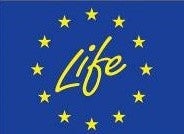On the occurrence of Coronaster briareus (Echinodermata, Forcipulatida, Asteriidae) in the Mediterranean Sea
The sea star Coronaster briareus (Verrill Am J Sci (Ser III), 1882) is reported for the first time from the Mediterranean Sea. A total of 26 individuals were sighted in Maltese waters during ROV surveys made in July 2015 and June–July 2016. The identity of the species was confirmed through morphological examination of a specimen … Read more

